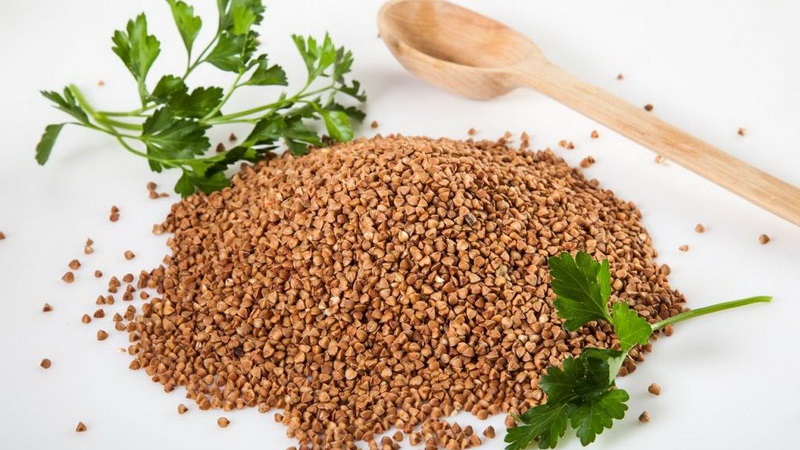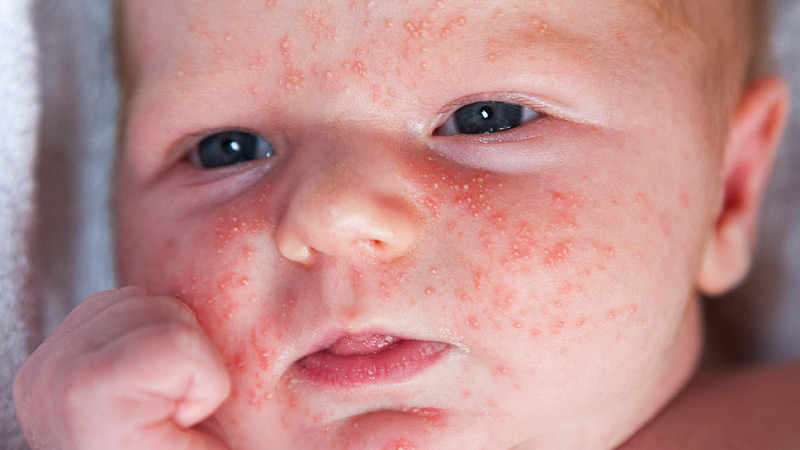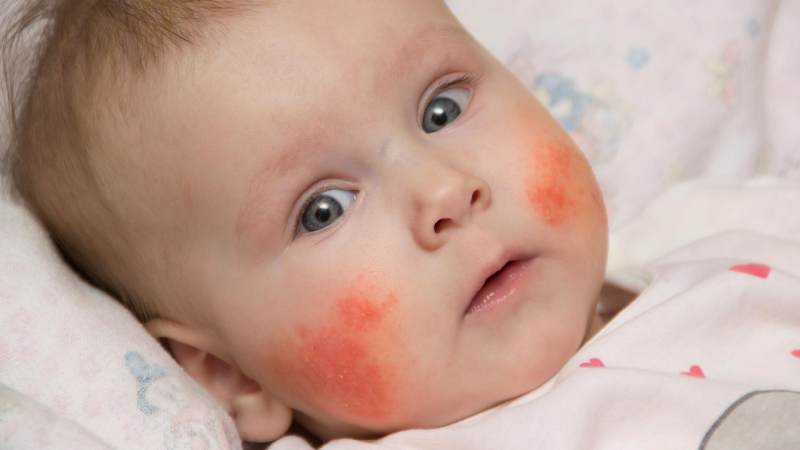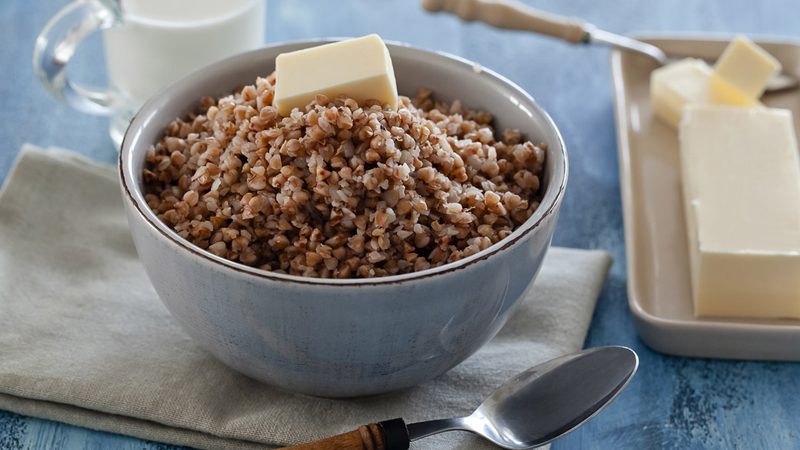Are babies allergic to buckwheat
Buckwheat often included in a hypoallergenic diet. However, in some cases, this cereal itself is capable of causing an allergic reaction.
If earlier the negative reaction of the body to buckwheat was attributed to individual intolerance, now allergies are more often diagnosed. It can manifest itself at any age, but infants are more susceptible to it.
The content of the article
Buckwheat as an allergenic product
Buckwheat belongs to the second order allergens. That is, it has an average degree of allergic activity.

Characteristics and description of the allergen
The main reason for the allergenicity of all cereals is gluten. However, this substance has nothing to do with buckwheat, because it does not belong to cereals, but to the Buckwheat family.
Nevertheless, buckwheat belongs to the middle category of potentially allergenic foods. In other words, an unpleasant reaction in a child may not appear immediately, but later.
Just a few years ago, a sensitive reaction to buckwheat dishes was explained by an individual intolerance to the product, since it was not possible to detect the effect of a specific allergen.
However, scientists were still able to find a cause that allows identifying the rejection reaction as a food allergy. Buckwheat contains a large amount of protein - from 16 to 19%. The main problem lies in proteins such as albumins, globulins and prolamins, the biological activity of which can lead to an allergic reaction.
Is there an allergy to buckwheat in infants?
Hypersensitivity to the product can be detected already in the first year of life, after the first complementary foods or through milk.
Parents need to carefully monitor all manifestations and seek medical help on time. After all, only a competent specialist can find out if this is an allergy, what is the cause of the unpleasant symptoms and what to do next.

Allergy to new
The baby's first reaction to buckwheat may appear already at the beginning of breastfeeding, when food elements enter the baby through breast milk. Therefore, moms are encouraged to introduce new products into their nutrition gradually and monitor the child's symptoms.
Directly itself buckwheat the baby tries already at the age of 6 months with the introduction of complementary foods. Some pediatricians advise parents to start complementary foods with porridge if the child is underweight.
Most often, the choice falls on buckwheat, since it has always been believed that this product practically does not give allergic reactions. However, like any new element in the baby's menu, buckwheat can cause an unwanted reaction.
Allergens in the composition
If instant buckwheat is used as a complementary food, which includes various additives, then the rejection reaction may appear not only on the main product, but also on complementary elements in the composition.
Cross allergy
If a newborn is allergic to a product that contains a protein similar in structure to that of buckwheat, then cross-allergy may develop. Moreover, the process can involve both a food product and a respiratory one, that is, inhaled.
Important! The danger is not only the use of buckwheat in food, but also the inhalation of buckwheat dust. Often, pillows and heating pads are filled with husks from grains.
If the baby has an intolerance to buckwheat protein, then in the future he may develop an allergy to sorrel and rhubarb.
Who is at risk
Parents should be especially vigilant in the following cases:
- The child has a genetic predisposition. If at least one of the parents is allergic to anything, then the probability of this problem in the child is high. The types of allergens in parents and in the baby may not be the same.
- The presence of chronic bowel disease.
- Enzymatic deficiency in infants.
- If during pregnancy a woman consumed a large amount of allergic products or was ill with infectious and viral diseases.
Causes of an allergy to buckwheat in infants
An allergic reaction in the body is triggered by high molecular weight proteins - food allergens. They are resistant to high temperatures and enzymes of the gastrointestinal tract, they dissolve well in water. Therefore, it is impossible to get rid of allergens in a product at home.
The mechanism of the formation of an allergic reaction to buckwheat in newborns
At the first contact with an allergen, the child's body produces the protein immunoglobulin E (Ig E), which is able to recognize antigens and neutralize their action.
Immunoglobulins attach to the immune cells of those tissues that are in contact with the external environment - these are the mucous membranes of the respiratory organs (contact with air), the digestive tract (contact with food).
From the first contact with an irritant to the manifestation of hypersensitivity to it, it can take several days or several months. Sometimes this period is calculated in years. All this time, Ig E accumulates in the body. And upon repeated contact with the allergen, a rejection reaction occurs.
How do symptoms appear?

The hypersensitivity reaction to buckwheat is manifested by a number of symptoms, which are combined into groups.
- Skin manifestations. Most often, the disease makes itself felt with red spots, which are accompanied by prickly heat, peeling. Subsequently, a dry thick crust forms, accumulations of microscopic blisters. The most affected by allergies are the face, head, neck and throat, limbs, groin. In other areas, symptoms may also appear, but much less frequently.
- Digestive upset. Mild allergic forms are associated with constipation or loose stools, a feeling of nausea, heartburn, and plaque appears on the tongue in babies. If the situation developed rapidly or for a long time no medical measures were taken, inflammation appears in the intestines, cutting pains in the stomach occur, accompanied by vomiting and frequent defecation. The latter symptoms are dangerous with the possibility of dehydration.
- Irritation of the nervous system. Babies feel anxious, naughty, or overly active, and there are often disruptions in the regimen.
- Respiratory manifestations. Sneezing, runny nose, cough, painful swallowing. The child's voice may change - the cry becomes hoarse or hoarse. More serious consequences are bronchial edema, suffocation, fainting, anaphylactic shock.
Diagnostics and treatment of buckwheat allergy in infants
An allergic reaction can be easily confused with the manifestation of other diseases and conditions. Skin rashes may begin as prickly heat, and food symptoms may begin as signs of rotavirus infection. poisoning or dysbiosis.
How to understand what exactly is an allergy
At home, the involvement of symptoms in allergies is tested with antihistamines. With allergies after taking medication, the symptoms go away or weaken.
However, more accurate information will be given by an analysis that detects specific immunoglobulin E to buckwheat in the blood. For research, donate venous blood on an empty stomach.
Elimination treatment
The most obvious way to treat allergies is to stop contact with the irritant. This method is called "allergen elimination".
Important! If the connection of an undesirable reaction with the use of buckwheat is proven, not only buckwheat itself is excluded from the diet, but also all products that may contain the protein that is part of the cereal. Often, artificial mixtures and flour are made on the basis of buckwheat. Also, buckwheat dust can be contained in pillows with such filler or heating pads.
Drugs
Pharmaceutical therapy for buckwheat allergy includes the same groups of drugs that are prescribed for other allergic manifestations. They are divided into several categories:
- Antihistamines. These funds relieve acute symptoms: they eliminate rashes, itching, redness on the skin. The result becomes noticeable in a short time. Not all antihistamines can be given to infants. Children under three years old are shown only medicines in the form of drops. Of the allowed - "Fenistil" (from birth, but addictive), "Zyrtek" (from six months), "Zodak" (from birth). In addition to drops, babies are also allowed ointments and, if necessary, injections.
- Sorbents. These medications help cleanse the body of toxins that form as a result of an allergic reaction. From birth, children are given "Smecta", "Enterosgel", "Polysorb".
- Probiotics. To restore the intestinal flora, use "Linex", "Acipol", "Bakset-baby".
Creams and ointments
Skin manifestations of allergies appear in the form of redness, peeling, cracks. In this case, mazi help. They contain an active active ingredient, as well as various oils and additives that help enhance the effect.
Bepanten, Skin-cap, Elidel, La-kri are used from infancy. In especially severe cases, ointments containing hormones are prescribed - for example, "Advantan" (allowed from six months).
Features of adding buckwheat to complementary foods

To start feeding, prepare porridge for your baby separately from the whole family. What adults eat will not work for babies. For a start, it is recommended to give the dish pureed. Feed your baby only freshly cooked porridge - using yesterday's portion is unacceptable.
When breastfeeding
Complementary feeding is recommended to start at six months of age if the baby is breastfed. The first puree food is introduced gradually, starting with half a teaspoon and adding one teaspoon every day.
Within a month, the child is given one type of cereal, and if the baby does not have a negative reaction, then another type of cereal is introduced into the diet.
Porridge selection rules
For the first feeding, dairy-free monocaches are selected, which consist of one ingredient and do not contain additives. It is better to introduce special baby cereals into complementary foods, which can be bought at pharmacies or specialized stores. Children are allergic to such cereals much less often than to ordinary ones cooked on their own.
Pediatrician advice

When allergic symptoms appear, pediatricians recommend that parents not self-medicate, but immediately seek medical help. Otherwise, in infants, such reactions can quickly take on a threatening form in the form of Quincke's edema and other serious manifestations.
Conclusion
Not always a negative reaction of the body to buckwheat is a consequence of allergies. It is possible that the whole point is that the immature enzyme system of an infant cannot yet cope with digestion specific product.
It is likely that over time this problem will go away by itself.Therefore, it is important for parents to find out the nature of the negative reaction before drawing any conclusions.